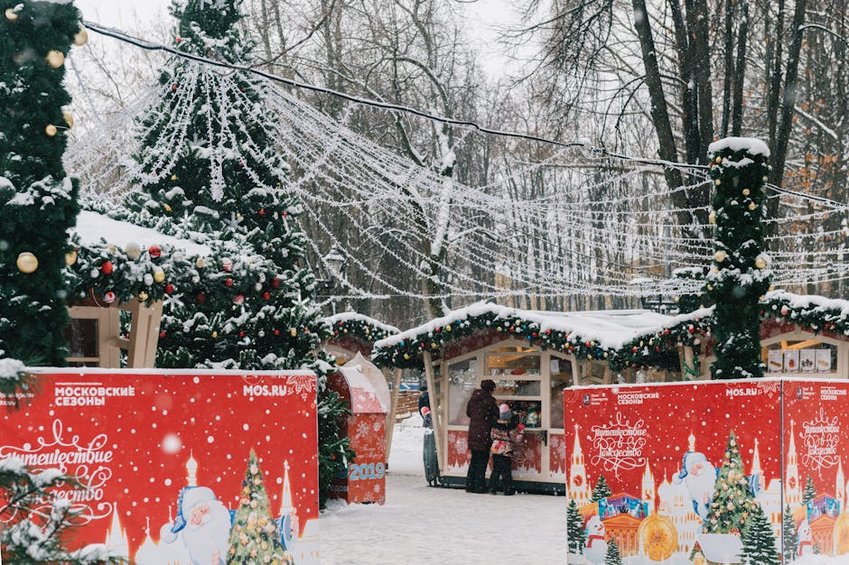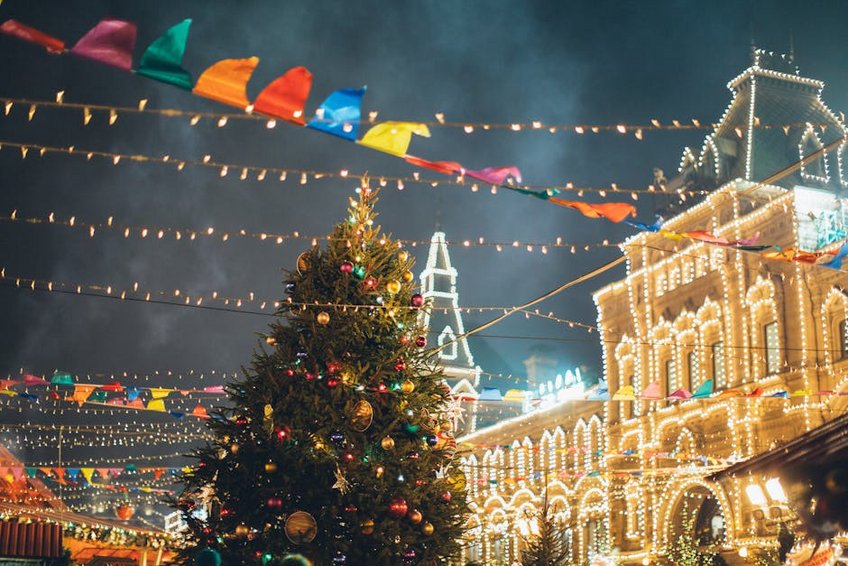Alsace Christmas Market Route
Embarking on the Alsace Christmas Market Route offers you an unforgettable journey through one of Europe’s most magical winter wonderlands, where medieval towns glow with festive lights and the air fills with the scent of mulled wine and gingerbread. This iconic route winds through picturesque villages in northeastern France, each boasting its own unique Christmas market filled with handcrafted ornaments, local delicacies, and centuries-old traditions. You’ll discover a blend of French and German influences that create a cozy, fairy-tale atmosphere perfect for holiday travelers seeking authentic experiences. From Strasbourg’s towering Christmas tree to Colmar’s canal-side stalls, the Alsace Christmas Market Route immerses you in seasonal cheer while providing opportunities to savor regional wines, explore historic architecture, and connect with local artisans. Planning your visit involves considering factors like timing, budget, and transportation to make the most of this enchanting adventure. Whether you’re a solo traveler, couple, or family, this guide will help you navigate the route’s highlights and hidden gems for a memorable holiday escape.
Alsace Christmas Market Route Essential Information
Understanding the fundamentals of the Alsace Christmas Market Route ensures you have a smooth and enjoyable experience from start to finish. This route typically spans several key towns in the Alsace region, including Strasbourg, Colmar, Kaysersberg, and Riquewihr, each offering distinct market atmospheres and cultural elements. You’ll find that markets generally operate from late November through December, with some extending into early January, allowing flexibility for your travel plans. The region’s rich history, influenced by both French and German cultures, means you’ll encounter unique traditions like Saint Nicholas parades and Advent concerts that add depth to your visit. Practical aspects such as currency (euros are standard), language (French and Alsatian dialects, though English is widely spoken in tourist areas), and accessibility should be considered early in your planning. Additionally, familiarizing yourself with local customs, like greeting vendors politely and understanding market layouts, will enhance your interactions and overall enjoyment.
What is the Alsace Christmas Market Route? – A Detailed Overview
- The route encompasses multiple Christmas markets across Alsace, with Strasbourg hosting the oldest market in France dating back to 1570, offering over 300 stalls spread across several locations in the city center.
- You’ll experience a diverse range of markets, from large urban setups in cities like Colmar to intimate village fairs in Eguisheim or Obernai, each featuring unique themes such as crafts, food, or medieval traditions.
- Key towns along the route are connected by scenic drives or efficient public transport, allowing you to explore at your own pace while enjoying the region’s half-timbered houses and cobblestone streets decorated with festive lights and ornaments.
- Budget options: Stay in hostels or guesthouses (around $50-80 per night), use public transport between towns (day passes approx. $10-20), and focus on free activities like market browsing and scenic walks; expect daily expenses of $60-100 per person including meals from stalls.
- Mid-range options: Choose 3-star hotels or B&Bs ($100-200 per night), rent a car for flexibility ($40-70 daily), and enjoy guided tours or cooking classes ($30-50 each); budget $150-250 daily per person for comfort and curated experiences.
- Luxury options: Opt for 4-5 star hotels or chateaus ($250-500+ per night), hire private drivers or join exclusive tours ($100-200 per day), and indulge in gourmet dinners and spa treatments; allocate $300-500+ daily per person for a premium, hassle-free journey.
- Official Alsace Tourism Board
- France Tourism Authority – Alsace Section
History and Cultural Significance – Roots of the Festive Tradition
Delving into the history of the Alsace Christmas Market Route reveals its deep cultural roots, originating from medieval Germanic traditions that evolved over centuries into the vibrant celebrations you see today. Strasbourg’s Christkindelsmärik, established in the 16th century, set the precedent for other markets in the region, blending religious symbolism with community gatherings. You’ll appreciate how these markets served as vital economic and social hubs where locals traded goods and celebrated Advent, a tradition that continues with modern twists like eco-friendly initiatives and international visitor engagement. The fusion of French and German influences is evident in everything from architecture to cuisine, reflecting Alsace’s tumultuous history and resilient spirit. Understanding this background enriches your experience, as you witness artisans practicing age-old crafts and taste recipes passed down through generations, all while contributing to the preservation of local heritage.
Alsace Christmas Market Route Planning Your Trip
Planning your Alsace Christmas Market Route adventure requires careful consideration of timing, budget, and logistics to maximize your enjoyment while avoiding common pitfalls. You should start by deciding whether to focus on specific towns or explore the entire route, as each option offers different experiences—from the bustling energy of Strasbourg to the tranquil charm of smaller villages. Booking accommodations and transport well in advance is crucial, as the peak season from late November to mid-December sees high demand, leading to limited availability and higher prices. Your budget should account for entry fees (though most markets are free), food, souvenirs, and activities, with options ranging from budget-friendly self-guided tours to luxury packages that include private guides and gourmet meals. Additionally, packing appropriately for cold weather, including layers, waterproof boots, and a reusable bag for purchases, ensures comfort as you wander through outdoor stalls. Leveraging resources like official tourism apps and maps can help you navigate efficiently, while allowing flexibility for spontaneous discoveries along the way.
Best Time to Visit the Alsace Christmas Market Route
Choosing the ideal time for your Alsace Christmas Market Route visit depends on your preferences for crowd levels, weather, and festive atmosphere. The markets typically open in late November and run until late December, with the busiest periods occurring on weekends and during the first two weeks of December when holiday spirit peaks. If you prefer quieter experiences, aim for weekdays in early December or late November, as you’ll encounter shorter lines and more intimate interactions with vendors. Weather-wise, December brings cold temperatures averaging 30-40°F (-1 to 4°C), often with occasional rain or snow, so dressing in warm layers is essential. For the fullest festive ambiance, visit around December 6th to coincide with Saint Nicholas Day celebrations, where parades and special events add extra magic. However, if you’re budget-conscious, late November offers lower accommodation rates while still providing a genuine Christmas market experience.
Budget Planning and Costs
Essential Preparation Checklist
Preparing thoroughly for your Alsace Christmas Market Route trip ensures you can focus on enjoyment rather than logistics, starting with securing necessary documents like a valid passport and checking visa requirements—US and EU citizens typically don’t need visas for short stays. You should book flights and accommodations several months in advance, especially if traveling during peak weeks, and consider travel insurance to cover unexpected cancellations or medical issues. Packing should include warm clothing, comfortable walking shoes, a power adapter for European outlets, and a phrasebook or translation app for basic French phrases. Financially, notify your bank of travel plans, carry some euros in cash for small purchases, and research SIM cards or roaming plans for connectivity. Finally, create a rough itinerary highlighting must-see markets and activities, but remain open to spontaneity, as discovering hidden courtyards or local festivals often becomes the highlight of your journey.

Alsace Christmas Market Route Top Attractions and Activities
Exploring the top attractions along the Alsace Christmas Market Route immerses you in a world of festive delights, from iconic markets to lesser-known gems that capture the region’s holiday spirit. You’ll want to prioritize Strasbourg’s Christkindelsmärik, where the towering Great Christmas Tree and illuminated Cathedral provide a breathtaking backdrop for over 300 stalls offering crafts, gifts, and treats. In Colmar, the multiple themed markets—like the Gourmet Market and Children’s Market—spread across the old town invite you to wander through canalside lanes while sampling local wines and flammekueche. Beyond the markets, activities such as horse-drawn carriage rides in Kaysersberg, visits to medieval castles like Haut-Koenigsbourg, and participating in Advent workshops where you can make your own decorations add depth to your experience. Each town boasts unique highlights; for instance, Riquewihr’s vineyard-surrounded market feels like stepping into a fairy tale, while Mulhouse’s market focuses on eco-friendly products. Balancing popular spots with quiet discoveries ensures a rich, memorable adventure filled with cultural insights and joyful moments.
Must-See Highlights – Unforgettable Market Experiences
Your journey along the Alsace Christmas Market Route wouldn’t be complete without visiting its must-see highlights, starting with Strasbourg’s Place Kléber market, home to Europe’s largest decorated Christmas tree and a stunning light show that dazzles visitors nightly. In Colmar, the Old Town’s six interconnected markets offer everything from artisan crafts to local delicacies, with the Petite Venise district providing a romantic setting for evening strolls. You should also include Kaysersberg, voted one of France’s favorite villages, where the market nestles against a historic bridge and fortress, creating a postcard-perfect scene. Don’t miss Obernai’s market, known for its traditional Alsatian music and dance performances, or Eguisheim’s intimate stalls encircling a medieval castle. These highlights not only showcase the route’s diversity but also allow you to engage with local traditions, such as tasting bredele cookies or watching glassblowers at work, making each stop a unique chapter in your holiday story.
Hidden Gems and Local Favorites – Off-the-Beaten-Path Discoveries
Venturing beyond the main attractions on the Alsace Christmas Market Route reveals hidden gems that offer authentic, crowd-free experiences, such as the market in Riquewihr, a fortified village surrounded by vineyards where you can sample rare wines and chat with local vintners. In Bergheim, you’ll find a quieter market focused on sustainability and organic products, ideal for eco-conscious travelers seeking unique souvenirs like handmade soaps or wooden toys. Another local favorite is the market in Sélestat, which celebrates the town’s claim as the birthplace of the Christmas tree with historical exhibits and themed decorations. For a cozy escape, visit Turckheim’s evening market, where torchlit processions and medieval costumes transport you back in time. These spots often have shorter lines, lower prices, and more personal interactions, allowing you to absorb the region’s charm without the hustle of larger towns. Incorporating a few of these into your itinerary adds depth and variety, ensuring you experience the true heart of Alsace’s holiday traditions.
Alsace Christmas Market Route Practical Travel Information
Navigating the practical aspects of the Alsace Christmas Market Route empowers you to travel confidently, focusing on enjoyment rather than hassles. You’ll find that the region is well-connected by train and bus networks, with Strasbourg serving as the primary hub, though renting a car offers flexibility for exploring remote villages. Accommodations range from budget hostels to luxury hotels, but book early as options fill quickly during the festive season; consider staying in central locations to minimize transport time. Currency-wise, euros are accepted everywhere, and credit cards are widely used, though cash is handy for market vendors. Key tips include learning basic French phrases for polite interactions, carrying a reusable water bottle and bag for sustainability, and using apps like Google Maps or local tourism guides for real-time updates. Additionally, be mindful of market hours—typically 10 AM to 7 PM, with variations by town—and check for special events like concerts or parades that might affect crowds and schedules. This practical knowledge ensures a seamless, stress-free adventure through Alsace’s winter wonderland.
| Category | Options/Features | Price Range (USD) |
|---|---|---|
| Accommodation | Hostels, B&Bs, 3-5 star hotels, vacation rentals | $50-500+ per night |
| Transportation | Trains, buses, rental cars, taxis, bike rentals | $10-100 daily |
| Food & Drinks | Market stalls, casual cafes, fine dining restaurants | $15-60 per meal |
| Activities & Tours | Guided walks, wine tastings, craft workshops | $20-150 per person |


